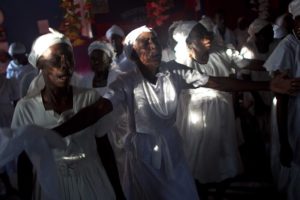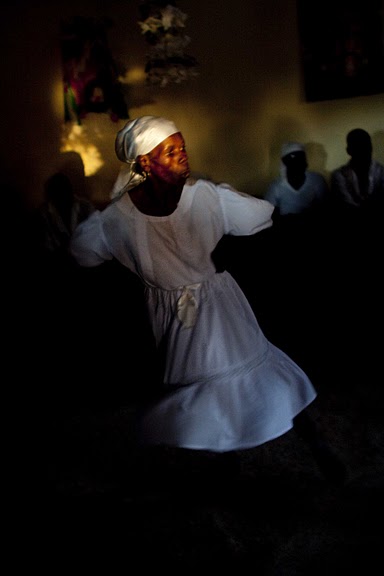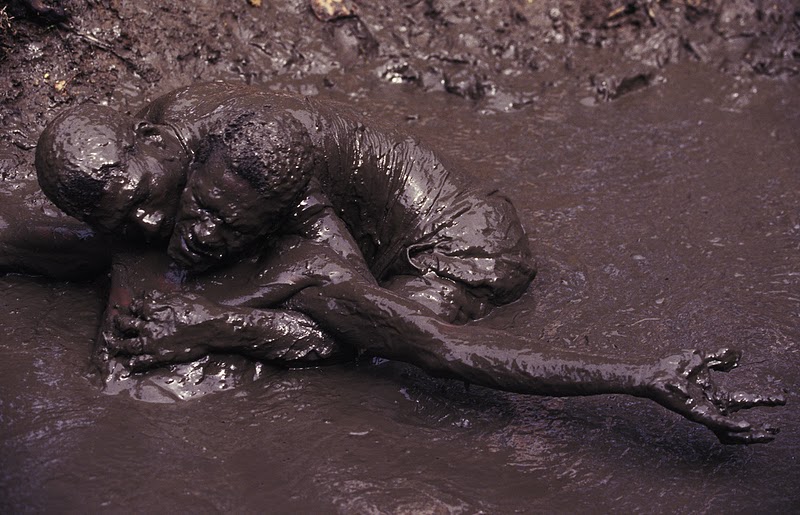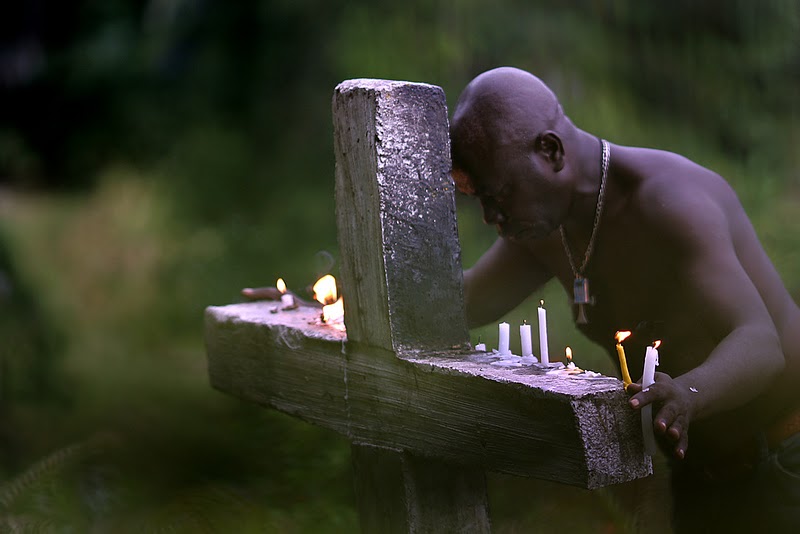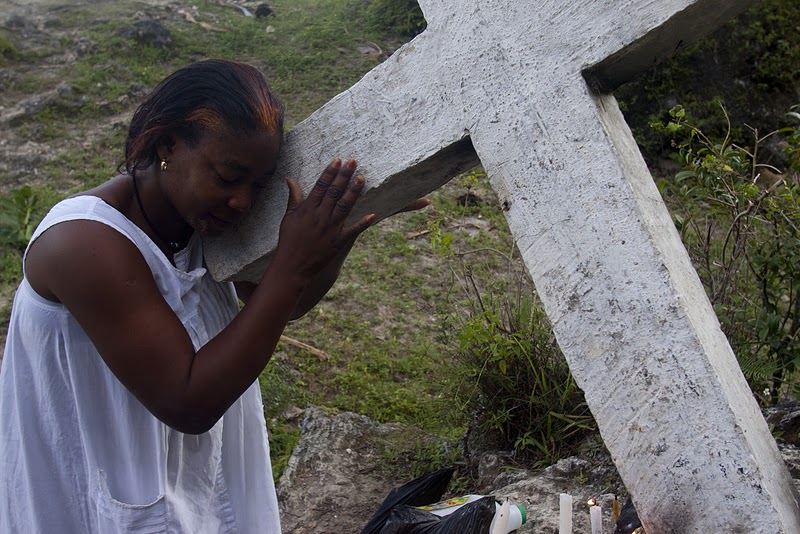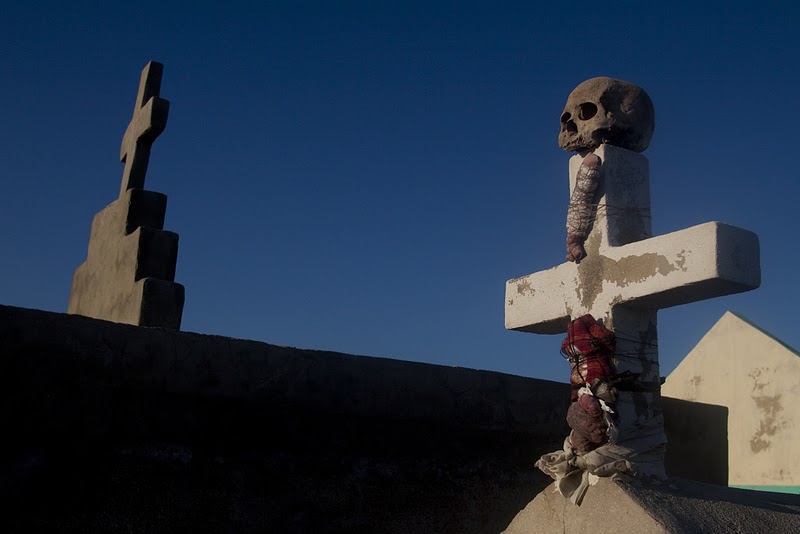Haitian Spirits: A Photo Essay by Les Stone
introduction and curation by Abigail Ohlheiser They're women and men (but mostly women) bathed in light, bathed in water, eyes to the sky, some touching and wearing crosses. They're possessed by spirits, dancing on dirt floors, fire in their mouths. Vodou in Haiti is like Catholicism, but not. Karen Brown wrote in her evocative book, Mama Lola: A Vodou Priestess in Brooklyn, that "Vodou Spirits, unlike the Catholic saints whose names they borrow, are characters defined by contradiction. The Vodou spirits represent the powers at work in and on human life."
introduction and curation by Abby Ohlheiser
They’re women and men (but mostly women) bathed in light, bathed in water, eyes to the sky, some touching and wearing crosses. They’re possessed by spirits, dancing on dirt floors, fire in their mouths. Vodou in Haiti is like Catholicism, but not. Karen Brown wrote in her evocative book, Mama Lola: A Vodou Priestess in Brooklyn, that “Vodou Spirits, unlike the Catholic saints whose names they borrow, are characters defined by contradiction. The Vodou spirits represent the powers at work in and on human life. The wholeness of the spirits – their ability to contain conflicting emotions and to model opposing ways of being in the world – gives Vodou its integrity as a religion.” Vodou reaches many Americans through heavy mediation: Voodoo and the ubiquitous dolls in TV and film, and zombies, for instance. Evangelical Christians might talk of Haiti as a place where the Devil is palpable, portraying Vodou as the boogeyman of world religions. Les Stone goes to Haiti and photographs Vodou. He’s been doing so since 1987. The photographs selected here, many of which were taken in the year after the earthquake, speak to that contradiction Brown identifies in the Vodou spirits. And in them, how Vodou has been portrayed as “other” becomes unrecognizable. While the images are striking and somehow strange, the scenes are also, in surprising ways, oh-so familiar.
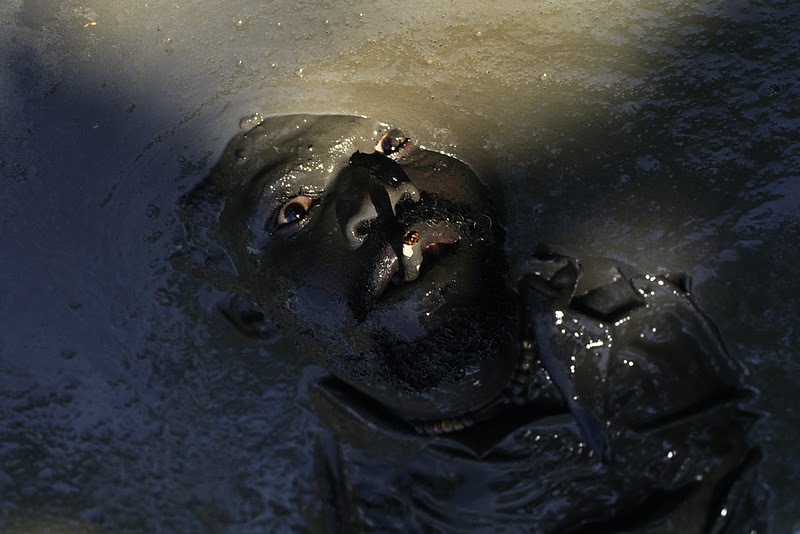
The mud or silt pool in Plaine Du Nord. Pilgrims come to the pool to seek the protection of Lwa Ogun, the deity or spirit of fire, metal, strength and power. Represented in Catholic iconography as St. James the Elder, Ogun lives in the pool. “The pool, a mystical place, becomes the theater for individual and collective fits of possession.” (1994)
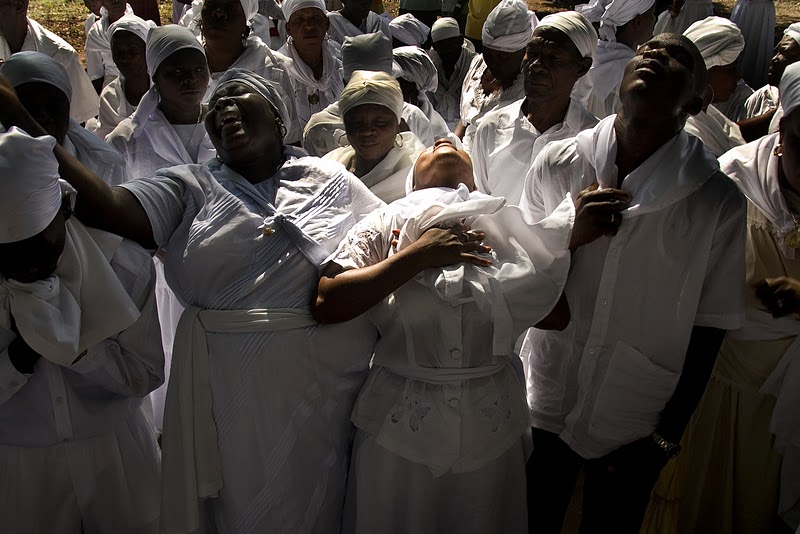
Neg Danhonmen Souvenance, outside Gonaives, at Easter-time celebrates the kingdom of Dahomey (which is now Benin), the mythical home of Haitians (2010).
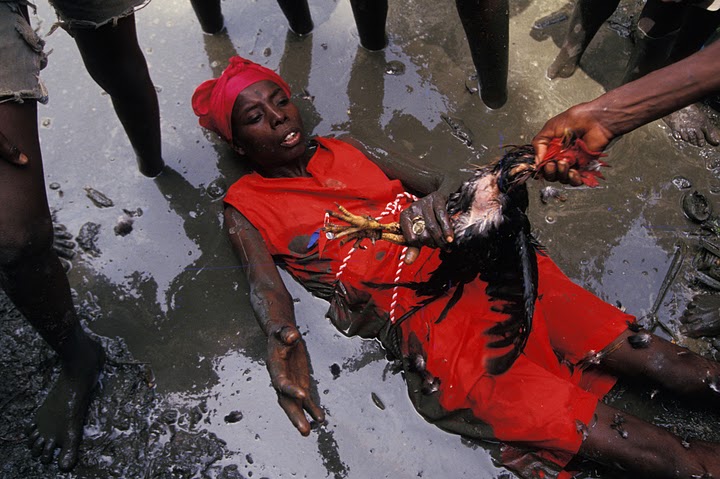
Pase Poul A healing ceremony; impurities and bad spirits are transferred to the chicken by brushing it on the patient’s body. The doctor then twists the chicken’s head in his mouth until it is severed (1994).
Les Stone, who’s been a photographer for more than 25 years, lives in the Catskills, New York. He’s photographed New Orleans after hurricane Katrina, Iraq after the invasion, Vietnam after Agent Orange, and Panama after Noriega. His images and more information can be found at www.lesstone.com. Contribute to his kickstarter book campaign here.
Abby Ohlheiser is a journalist and graduate student at NYU’s Religion and Journalism program.
